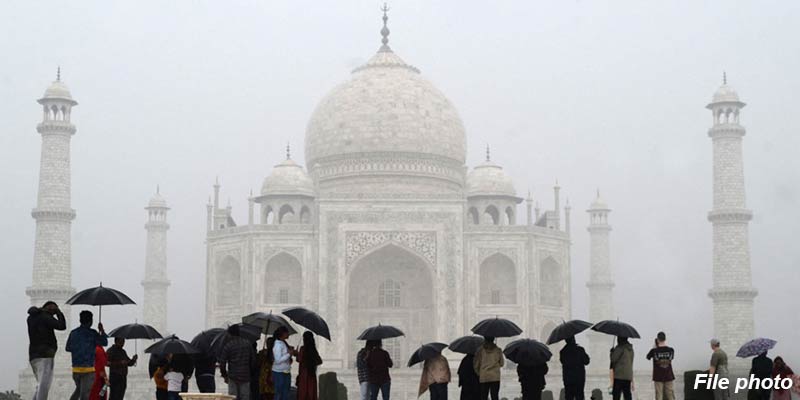- India
- Sep 17
- Kevin Savio Antony
Places in news: Taj Mahal
The main dome of the Taj Mahal here witnessed water seepage due to incessant rains for three days, but there is no damage to the arched roof, a senior Archaeological Survey of India official said.
Key facts about Taj Mahal:
• An immense mausoleum of white marble, built in Agra between 1631 and 1648 by order of the Mughal emperor Shah Jahan in memory of his favourite wife, the Taj Mahal is the jewel of Muslim art in India and one of the universally admired masterpieces of the world's heritage.
• The Taj Mahal is a testament to Mughal architectural brilliance, blending Islamic, Persian, and Indian styles.
• Constructed between 1631 and 1648, it stands as one of the Seven Wonders of the Contemporary World and was declared a UNESCO World Heritage Site in 1983.
• The construction, led by Ustad Ahmad Lahauri, employed around 20,000 artisans and is known for its white Makrana marble and intricate inlay of precious and semi-precious stones.
• It serves as a mausoleum for Mumtaz Mahal, the wife of Emperor Shah Jahan, with both their replicas in the main hall and actual tombs located in a lower chamber.
Architectural Features:
• The Taj Mahal sits on an elevated square plinth, with four minarets at each corner.
• The inner chamber is an octagonal structure, with jali work and Quranic inscriptions adorning the cenotaphs.
• The tombs are unadorned, in accordance with Islamic customs, though the caskets and bases are richly decorated with floral and geometric designs, featuring 28 kinds of precious stones.
Reasons for Deterioration:
• Sulphur Dioxide (SO₂) Pollution: For decades, SO₂ emissions from industries were considered the main cause of the decay of the white marble, turning parts of the monument yellow and black.
• Hydrogen Sulphide (H₂S): Recent studies have found that H₂S from the polluted Yamuna River is more corrosive to the marble than SO₂.
• Insect Infestation: Phosphorus in the Yamuna has led to Goeldichironomus insect proliferation, whose excreta are causing green and brown patches on the monument's surface.
Taj Trapezium Zone
• MC Mehta vs Union of India: This case drew attention to the impact of acid rain, industrial pollution, and emissions from coke/coal industries on the Taj Mahal.
• The Supreme Court ordered these industries to either switch to natural gas or relocate outside the Taj Trapezium Zone (TTZ) to protect the monument.
• The TTZ, a 10,400 sq. km area around the Taj, was established to limit industrial activities and curb pollution, highlighting the ongoing struggle to preserve this iconic heritage site.
(The author is a trainer for Civil Services aspirants.)

